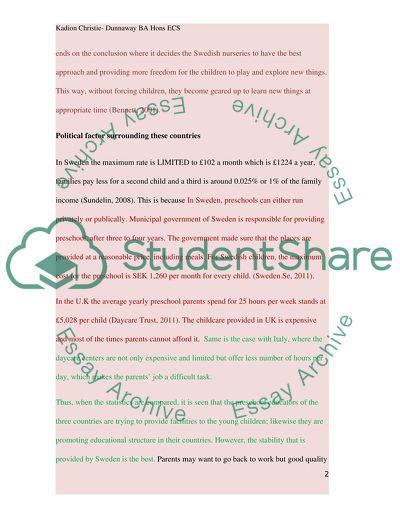International Perspectives in Childhood Essay Example | Topics and Well Written Essays - 1750 words. https://studentshare.org/education/1752450-critical-evaluation-of-uksweden-and-italy-pre-school-practice
International Perspectives in Childhood Essay Example | Topics and Well Written Essays - 1750 Words. https://studentshare.org/education/1752450-critical-evaluation-of-uksweden-and-italy-pre-school-practice.


